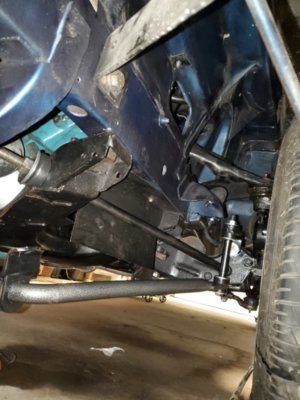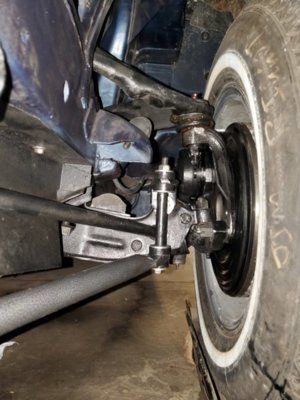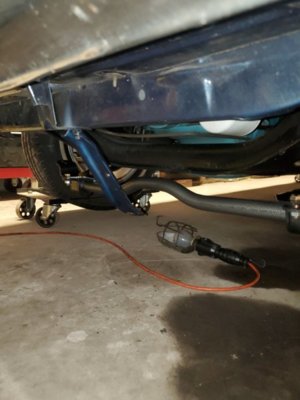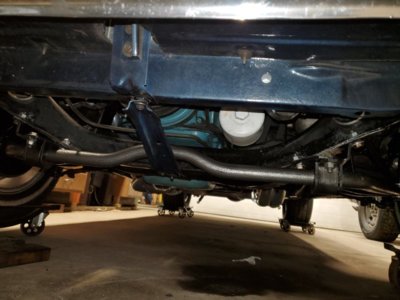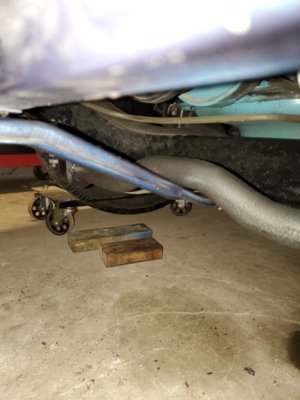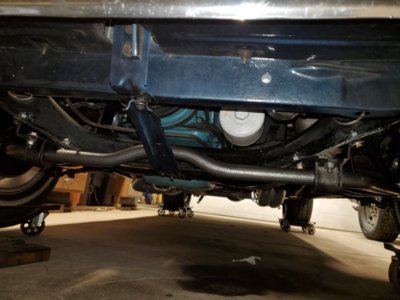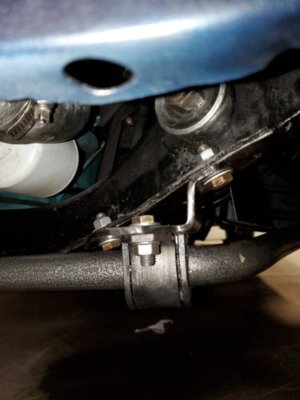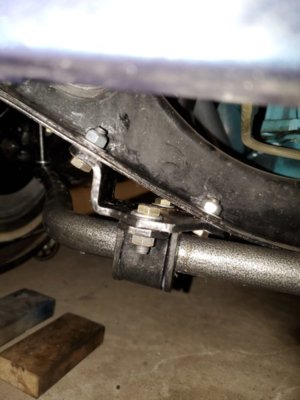Glenwood
Well-Known Member
- Local time
- 5:11 AM
- Joined
- Jun 19, 2015
- Messages
- 2,929
- Reaction score
- 2,849
- Location
- Kawartha Lakes, Ontario
With a more power available than the old poly318 had, I decided it was time to upgrade the suspension and braking system on the ’64, now that I’m done with the sheet metal work, engine & cooling system (which took longer and cost more than imagined!) The single can master cylinder and 10 inch drum brakes felt soft and made me a bit nervous at times.


Without many options up here in in the great white north, though national moparts does sell a package for the front, I settled on Dr. Diff’s offering.


Wanting to do a 4 wheel disc conversion meant the rear end would need to have flanged styled axles instead of the original tapered axles available in ’64. I had already swapped the rear end with a ’70, but it was still a bit too wide for the 275’s in the wheel wells, even with 4.5” back spacing. However, there is enough clearance to the leafsprings for over 5” backspace.


I found a ’63 B-body rear end for sale locally and picked it up. This housing is approx. 1.5” narrower than the ’70. I ordered new axles from Cass as well. After checking the gears and replacing the front seal on the 3.23 741, I cleaned, painted and installed back on the 63 housing. The flange studs for the pumpkin were in rough shape so these were replaced. For the brake conversion, longer axle tube flange studs are needed, so these were replaced too.


Cass was able to pull these items together and ship them to me in a week, while I was in the USA on a business trip recently.
The front brake kit has:
· new spindles (73-76 Duster/73-74 Challenger). You have to reuse your two large mounting bolts.
· Rotors from a 78 Cordoba
· Calipers 82 Diplomat
· Hoses & Timken bearings.
I ordered new front SS brake lines, Mopar aluminum dual master cylinder with a 15/16” bore & 2 to 4 bolt adapter, distribution block, master cylinder lines
The rear end brake kit has:
· Aluminum caliper brackets
· Rotors for a Toyota Cressenda
· Calipers with E-brake for a 98 Cobra
· Braided hoses
· Optional New E-brake cables
Without many options up here in in the great white north, though national moparts does sell a package for the front, I settled on Dr. Diff’s offering.
Wanting to do a 4 wheel disc conversion meant the rear end would need to have flanged styled axles instead of the original tapered axles available in ’64. I had already swapped the rear end with a ’70, but it was still a bit too wide for the 275’s in the wheel wells, even with 4.5” back spacing. However, there is enough clearance to the leafsprings for over 5” backspace.
I found a ’63 B-body rear end for sale locally and picked it up. This housing is approx. 1.5” narrower than the ’70. I ordered new axles from Cass as well. After checking the gears and replacing the front seal on the 3.23 741, I cleaned, painted and installed back on the 63 housing. The flange studs for the pumpkin were in rough shape so these were replaced. For the brake conversion, longer axle tube flange studs are needed, so these were replaced too.
Cass was able to pull these items together and ship them to me in a week, while I was in the USA on a business trip recently.
The front brake kit has:
· new spindles (73-76 Duster/73-74 Challenger). You have to reuse your two large mounting bolts.
· Rotors from a 78 Cordoba
· Calipers 82 Diplomat
· Hoses & Timken bearings.
I ordered new front SS brake lines, Mopar aluminum dual master cylinder with a 15/16” bore & 2 to 4 bolt adapter, distribution block, master cylinder lines
The rear end brake kit has:
· Aluminum caliper brackets
· Rotors for a Toyota Cressenda
· Calipers with E-brake for a 98 Cobra
· Braided hoses
· Optional New E-brake cables

